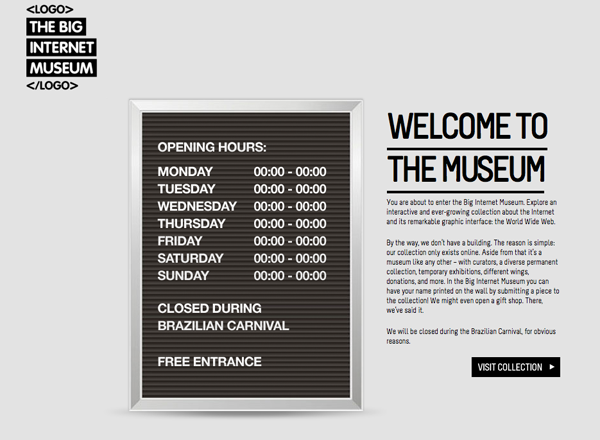The Big Internet Museum Takes Web Browsers Way Back


Can you believe the Internet turned 50 this year—although, it wasn’t called the Internet back then. Back in 1969—when the 10,000 or so computers in the world cost thousands of dollars apiece—former NASA tech Robert William Taylor led the Pentagon’s Advanced Research Projects Agency in creating ARPAnet, a method of networking the data stored in the few expensive processers owned by universities and research labs.
After 50 years of developments, three employees of the Dutch advertising agency TBWA/Neboko decided the World Wide Web is worth of its own museum. They commissioned digital production firm MediaMonks to create a Web site commemorating the Web’s history, and the Big Internet Museum was born.
Currently, the museum also features the introduction of the first e-mail concept I 1971; USENET—the precursor of the World Wide Web—in 1979, which resembled today’s Web forums; Google’s emergence in 1997; and the Napster craze that began in 1998.
MediaMonks used a crowdsourcing model in developing the site, so only visitor-approved pieces are posted. Therefore, the museum site is still a work in progress. Prospective curators are welcome to submit Web history content, which is then voted upon by the public from an area of the site. The most popular pieces will be displayed in the museum’s Internet timeline.
Sumbmissions currently up for vote include Mosaic, Gmail, Javascript, Paypal, Yahoo and EBay.
[Image via The Big Internet Museum]









































